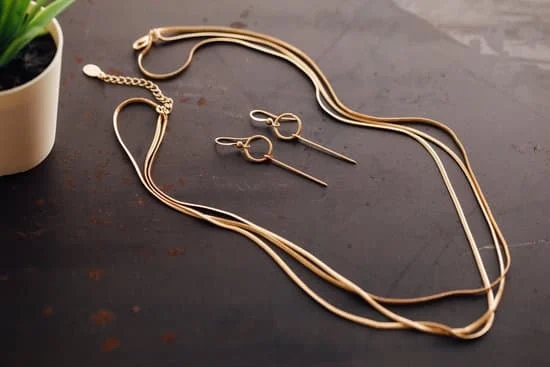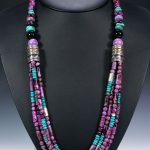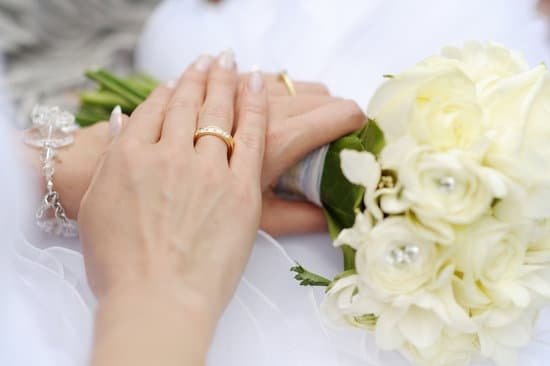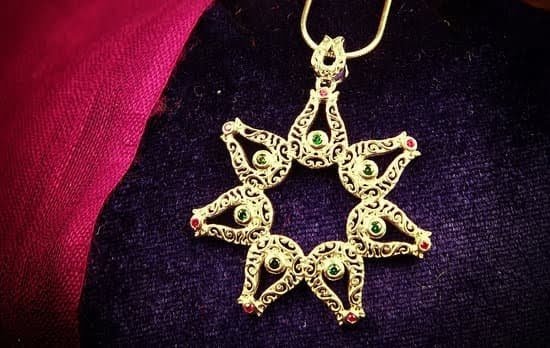Antique bead jewelry holds a unique charm that captivates collectors and enthusiasts alike with its rich history and exquisite craftsmanship. Understanding how to tell if bead jewelry is antique is crucial for both buyers and sellers in the world of vintage jewelry. The allure of these pieces lies not only in their beauty but also in the stories they carry from generations past, making it essential to be able to distinguish between genuine antique pieces and modern reproductions.
Throughout history, bead jewelry has played a significant role in various cultures, symbolizing status, protection, and spirituality. From ancient Egypt to Victorian England, beads have been used to adorn clothing, accessories, and even rituals, showcasing the versatility and timelessness of this art form. As styles have evolved over the years, antique bead jewelry continues to be treasured for its intricate designs, quality materials, and attention to detail.
When examining antique bead jewelry for authenticity, there are key characteristics to consider such as the type of materials used (e.g. glass, gemstones), the craftsmanship evident in the piece (e.g. hand carved beads), and the overall design aesthetic corresponding to specific periods or styles. By understanding these features and learning how to identify them effectively, collectors can enhance their appreciation for these timeless treasures while also ensuring they are making informed purchases or additions to their collections.
History of Bead Jewelry
Bead jewelry has a long and rich history that dates back thousands of years, with evidence of its existence found in archaeological sites around the world. Used for adornment and as a form of self-expression, bead jewelry has been an integral part of various cultures, symbolizing status, spirituality, and artistry. From ancient Egypt to the Mayan civilization, beads have played a significant role in both everyday wear and ceremonial attire.
Key Points
- Ancient Bead Jewelry: Beads made from materials such as shells, stones, and bones were crafted by early civilizations to create intricate designs.
- Cultural Significance: Different cultures used bead jewelry to convey social status, religious beliefs, and traditions.
- Evolution of Techniques: Over time, advancements in technology and trade routes led to the development of new bead-making techniques and styles.
As societies interacted through trade routes, beads became valuable commodities that were exchanged across continents. The introduction of glass beads in the Roman Empire revolutionized bead jewelry production, allowing for more intricate designs and vibrant colors. In Asia, delicate hand-carved jade beads symbolized prosperity and longevity, while in Africa, intricate beaded necklaces were worn during important ceremonies to denote tribal affiliation or marital status.
Development Over Time
- Medieval Europe: Bead jewelry was adorned with symbols of faith during the Middle Ages.
- Renaissance Period: Intricately beaded collars and cuffs were popular among European nobility.
- Industrial Revolution: Mass production techniques enabled the production of affordable bead jewelry for the growing middle class.
Understanding the history of bead jewelry provides valuable insight into the evolution of design techniques, materials used, and cultural significance attached to these pieces. By recognizing these key aspects of bead jewelry’s past, collectors can develop a deeper appreciation for antique pieces and better distinguish between authentic artifacts and modern reproductions. It is essential for enthusiasts to delve into the historical context behind bead jewelry to discern its true value as a reflection of artistic expression through time.
Characteristics of Antique Bead Jewelry
Antique bead jewelry holds a special allure for many collectors and enthusiasts due to its unique craftsmanship, historical significance, and timeless beauty. Understanding how to tell if bead jewelry is antique is crucial for those looking to add authentic pieces to their collection. By examining the key characteristics of antique bead jewelry, including materials, craftsmanship, and design, individuals can better discern between genuine antique pieces and modern reproductions.
When evaluating bead jewelry for authenticity, it is important to consider the materials used in its creation. Antique bead jewelry often features natural materials such as precious metals like gold or silver, gemstones, pearls, and handcrafted glass beads. These materials were commonly used in earlier periods due to their availability and traditional crafting techniques. Additionally, antique bead jewelry may exhibit signs of wear or patina that develop over time, further indicating its age and authenticity.
Craftsmanship plays a critical role in determining the authenticity of antique bead jewelry. Skilled artisans meticulously handcrafted these pieces using intricate techniques that have been passed down through generations. Whether it’s the precision of bead weaving, the delicacy of filigree work, or the artistry of enamel detailing, the quality of craftsmanship can reveal much about the age and origin of a piece.
Designs found in antique bead jewelry often reflect the style trends prevalent during specific historical periods or cultural influences. From Victorian mourning beads to Art Deco geometric patterns, identifying these signature designs can provide valuable insight into the provenance of a piece.
- Materials: Look for natural materials commonly used in antique jewelry such as gold, silver, gemstones, pearls.
- Craftsmanship: Assess the quality of craftsmanship through examination of intricate techniques like filigree work or enamel detailing.
- Design: Identify signature designs that reflect historical periods or cultural influences.
Identifying Authenticity
Antique bead jewelry holds a special charm for collectors and enthusiasts alike, as these pieces often carry with them a rich history and unique craftsmanship. However, with the proliferation of reproductions in the market, it becomes crucial to be able to distinguish between authentic antique bead jewelry and modern imitations. So, how to tell if bead jewelry is antique?
One key aspect to look out for is the materials used in the piece. Antique bead jewelry typically utilizes natural materials like pearls, coral, amber, or glass beads that show signs of age and wear.
Craftsmanship is another vital factor in identifying authentic antique bead jewelry. Antique pieces often exhibit intricate detailing, precise handiwork, and fine artistry that may not be replicated in modern reproductions. Additionally, examining the design of the piece can provide clues to its authenticity – vintage styles, motifs from specific historical periods, or cultural influences can all indicate the age of the jewelry.
One useful technique for determining whether bead jewelry is truly antique is to closely inspect any markings or signatures present on the piece. Antique jewelers often marked their creations with specific stamps or signatures that can help authenticate the age and origin of the jewelry.
Consulting reference books, reaching out to experts in antique jewelry, or even utilizing online resources can also aid in confirming the authenticity of a piece. By carefully considering these tips and techniques, collectors can better navigate the world of antique bead jewelry and make informed decisions when adding pieces to their collections.
| Key Aspect | How to Identify |
|---|---|
| Materials | Natural materials show signs of age |
| Craftsmanship | Intricate detailing and fine artistry |
| Markings/Signatures | Check for specific stamps or signatures by jeweler |
Conducting Research
Antique bead jewelry holds a unique appeal for collectors and enthusiasts due to its historical significance and craftsmanship. To truly appreciate these pieces, it is essential to understand how to tell if bead jewelry is antique.
One of the most vital aspects of this process is conducting thorough research on the origins and age of each piece. By utilizing various resources like books, websites, and experts, individuals can gain valuable insights into the history and provenance of their antique bead jewelry.
Books dedicated to the topic of antique jewelry can be valuable resources for those seeking information on bead jewelry. These books often provide detailed descriptions of different styles, periods, and regions where specific types of bead jewelry originated. By studying these references, individuals can learn about the materials used, techniques employed, and design trends that are indicative of certain time periods or cultures in the history of bead jewelry.
In addition to books, online resources play a crucial role in researching antique bead jewelry. Websites specializing in vintage jewelry or antiques can offer a wealth of information on identifying antique pieces through photographs, descriptions, and expert articles.
Online forums and discussion groups also provide a platform for collectors to share their knowledge and seek advice from experienced professionals in the field. Moreover, digital archives containing historical documents, catalogs from past auctions, or museum collections can further aid in understanding the origins and age of specific bead jewelry pieces.
| Resources | Benefits |
|---|---|
| Books | Detailed descriptions of styles, periods, materials used |
| Websites | Photographs, expert articles, online forums for sharing knowledge |
| Experts | Valuable insights and guidance on researching antique bead jewelry |
Testing Methods
X-Ray Testing
One method commonly used to determine the age and authenticity of antique bead jewelry is through X-ray testing. By using X-rays, experts can analyze the composition of the beads and other materials used in the jewelry piece.
This testing can reveal valuable information about the age of the jewelry, such as whether it contains rare or historical elements that are consistent with its purported antique status. X-ray testing can also help identify any repairs or alterations made to the piece over time, which can impact its authenticity.
UV Light Testing
Another useful technique for confirming the age and authenticity of bead jewelry is through UV light testing. UV light can help detect different types of treatments or coatings that may have been applied to the beads, as well as highlight any discrepancies in color or materials that could indicate a reproduction rather than an authentic antique piece.
By examining bead jewelry under UV light, collectors and experts can uncover hidden details that may not be visible to the naked eye, providing valuable insights into its history and origins.
Magnetic Testing
In addition to X-ray and UV light testing, magnetic testing is another method that can be employed to verify the authenticity of antique bead jewelry. Magnetic testing involves using a magnet to determine if the beads contain any magnetic elements that are inconsistent with their claimed age or materials composition.
If the beads exhibit magnetic properties that are not typical of antique jewelry from a specific era or culture, it could indicate that they are not genuine antiques. This type of testing can help collectors and buyers make informed decisions when assessing the value and authenticity of bead jewelry pieces.
Evaluating Value
Antique bead jewelry holds a special place in the hearts of collectors and enthusiasts due to its historical significance, craftsmanship, and unique designs. As such, evaluating the value of these pieces becomes crucial for those looking to add them to their collection or make informed purchases. Understanding the factors that influence the value of antique bead jewelry, including rarity, condition, provenance, and market demand, can help individuals make well-informed decisions when it comes to acquiring or selling these pieces.
Rarity
One of the key factors that can significantly impact the value of antique bead jewelry is its rarity. Pieces that are scarce or hard to come by are often highly sought after by collectors, driving up their market value.
Rare beads made from precious materials or featuring unique designs are more likely to command higher prices due to their limited availability. Additionally, beads from specific time periods or cultures that are considered rare can also contribute to the overall value of antique jewelry pieces.
Condition
The condition of antique bead jewelry plays a crucial role in determining its value. Pieces that have been well-preserved with minimal signs of wear and tear are generally more desirable than those that show significant damage or deterioration.
Inspecting the overall quality of the beads, settings, and any accompanying elements like clasps or connectors is essential when evaluating the condition of antique jewelry. Any repairs or alterations can also affect the value of a piece, as originality is highly prized in the world of antique collecting.
Provenance and Market Demand
Provenance refers to the documented history and origin of an antique bead jewelry piece, which can greatly influence its value. Jewelry with a known provenance tracing back to a notable figure or event may fetch higher prices at auctions or sales due to its historical significance. Additionally, market demand plays a significant role in determining the value of antique bead jewelry pieces.
Trends in collecting preferences, cultural influences, and fashion industry endorsements can impact how certain types of beads are valued in today’s market. Keeping abreast of current trends and understanding consumer demand can help collectors make informed decisions about buying and selling antique bead jewelry pieces.
By considering factors such as rarity, condition, provenance, and market demand when evaluating antique bead jewelry pieces, collectors and enthusiasts can gain valuable insights into the true worth of these treasured items. Whether you’re looking to expand your collection or explore the world of vintage jewelry, understanding what influences the value of these timeless pieces can guide you towards making informed choices in your pursuit of authentic antique bead jewelry.
Conclusion
In conclusion, understanding how to tell if bead jewelry is antique is crucial for collectors and enthusiasts who appreciate the rich history and craftsmanship of these unique pieces. By delving into the history of bead jewelry, exploring its characteristics, and learning about authenticity indicators, individuals can develop a keen eye for distinguishing between true antiques and modern reproductions.
To identify authentic antique bead jewelry, one must pay attention to details such as materials used, craftsmanship techniques employed, and design elements that were popular during different historical periods. Conducting thorough research on the origins and age of a piece can provide valuable insights into its provenance and help verify its authenticity. Utilizing resources like books on antique jewelry, reputable websites specializing in antiques, or consulting with experts in the field can also aid in this process.
For those looking to evaluate the value of antique bead jewelry pieces, factors like rarity, condition, provenance, and current market demand play significant roles. By considering these aspects alongside the results of testing methods like X-rays or UV light examinations, collectors can make informed decisions when it comes to acquiring or selling antique bead jewelry.
With a final checklist in hand that encompasses all these key points, enthusiasts can navigate the world of antique bead jewelry with confidence and appreciation for its timeless beauty.
Frequently Asked Questions
How Can You Tell if Beads Are Vintage?
Vintage beads often show signs of wear and patina that are characteristic of aging. Look for details like discoloration, fading, or surface scratches to indicate their age. Additionally, vintage beads may have unique shapes or designs that reflect the styles of past eras.
Is Beaded Jewelry Worth Anything?
Beaded jewelry can vary widely in value depending on factors such as the materials used, craftsmanship, and provenance. Some beaded jewelry made with precious metals and gemstones can be quite valuable, especially if they are from well-known designers or brands. However, mass-produced pieces may not hold as much intrinsic value.
How Do You Identify Bead Material?
Identifying bead material typically involves examining the color, texture, weight, and temperature of the beads. For example, glass beads are usually smooth and cool to the touch, while plastic beads may feel lightweight and warmer.
Additionally, conducting a simple scratch test or using a magnifying glass can help determine if a bead is made from materials like glass, stone, wood, metal or plastic.

Welcome to my jewelry blog! My name is Sarah and I am the owner of this blog.
I love making jewelry and sharing my creations with others.
So whether you’re someone who loves wearing jewelry yourself or simply enjoys learning about it, be sure to check out my blog for insightful posts on everything related to this exciting topic!





